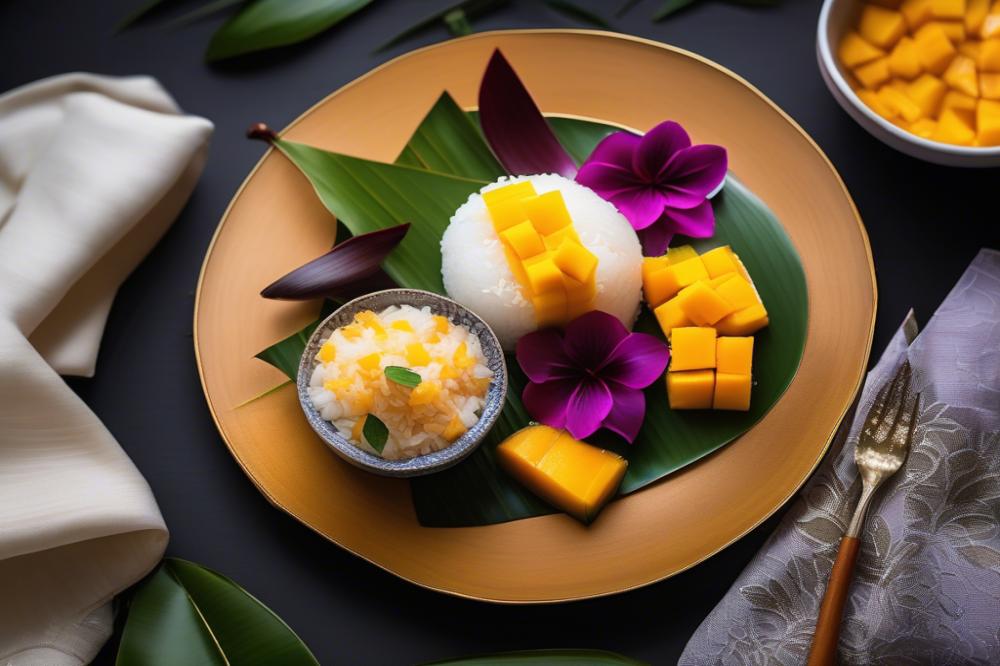Sticky Rice with Mango: A Quintessential Thai Dessert
Sticky Rice with Mango stands out as a beloved treasure in Thai cuisine. This traditional Thai Dessert embodies the vibrant flavors and textures that define much of the region’s culinary offerings. Beyond its delicious taste, this dish reflects a broader trend in Asian desserts: the artful use of tropical fruits. Ripe mangoes, known for their sweet and juicy flesh, pair beautifully with the creamy richness of coconut milk. Together, these ingredients create a delightful harmony that tantalizes the taste buds.
Street food vendors often serve this sweet snack, making it easily accessible to both locals and tourists. Each bite offers a glimpse into Thailand’s unique food culture. People enjoy this dessert recipe on festive occasions, but it is also a comforting everyday treat. The sticky rice recipe is simple yet satisfying, showcasing the versatility of easily sourced ingredients found in tropical climates.
Tropical fruits play a key role in many Asian desserts, and ripe mangoes are particularly cherished. The marriage of flavors in this dish speaks to the resourcefulness of Thai cooking. Diners can appreciate the contrast of warm sticky rice with chilled mango slices draped in luscious coconut milk. This recipe captures the essence of sweet indulgence, making it a must-try for anyone exploring Thai flavors.
Sticky Rice with Mango
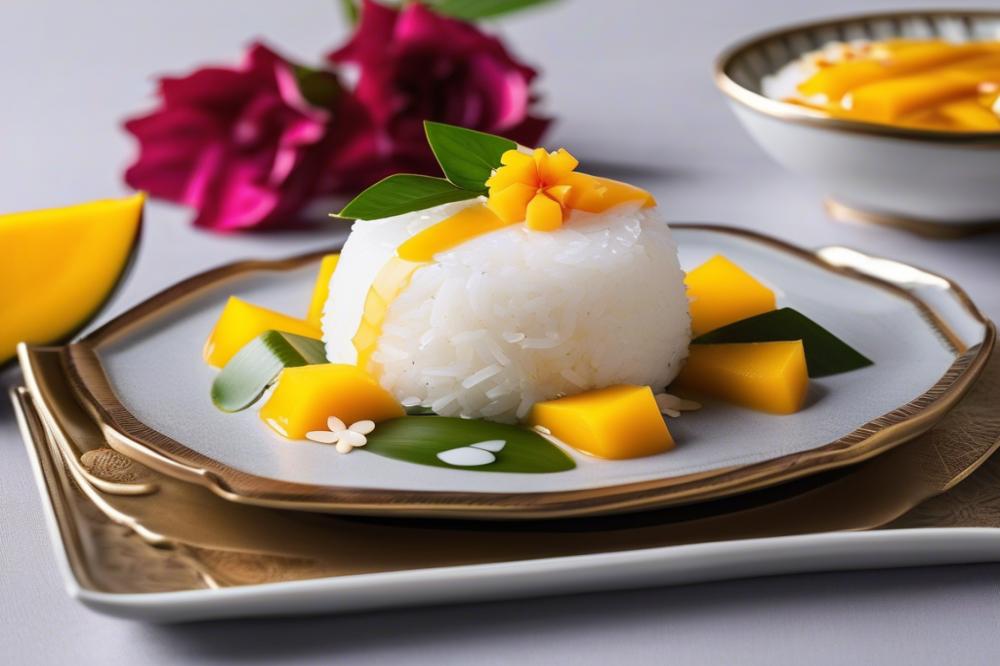

Sticky rice with mango is more than just a dish; it holds a special place in Thai culture. Many people consider it a beloved street food throughout Thailand. The blend of sweet, ripe mango and creamy coconut milk over sticky rice creates a satisfying treat. This dessert recipe is popular among locals and visitors alike, often eaten as a sweet snack or a special dessert. Its appeal lies not only in its flavor but also in its simplicity.
In Thai cuisine, seasonal fruits play an essential role. When mangos are ripe and juicy, vendors showcase this delightful dish. Street vendors prepare it fresh daily, making it accessible to anyone craving a bite of something sweet. The beauty of this dessert also lies in its presentation. Bright yellow mango sits atop glutinous rice, often garnished with sesame seeds or a sprinkle of mung beans. This visual appeal attracts many eyes, making it hard to resist.
Additionally, sticky rice has cultural significance in Thailand. Many families enjoy making this dish together, sharing in the preparation of the sticky rice recipe. At festive occasions and celebrations, this dessert is often served, symbolizing joy and togetherness. Therefore, it connects people, whether at a street food stall or a family gathering.
Locals adore it not only for its taste but also for its nostalgic value. Memories of enjoying this dish with friends and family resonate deeply within Thai society. Tourists often seek it out during their travels, eager to experience authentic flavors of Asian desserts. This cross-generational love makes sticky rice and mango a staple that withstands the test of time.
In conclusion, its combination of textures helps cement its place in the hearts of many. The soft, chewy rice paired with the smooth coconut milk and fresh tropical fruits is irresistible. Each bite brings a taste of Thailand and a connection to its rich culinary tradition. Enjoying this delightful dessert is more than a casual experience; it is a glimpse into the true essence of Thailand.
Ingredients and Cooking Instructions
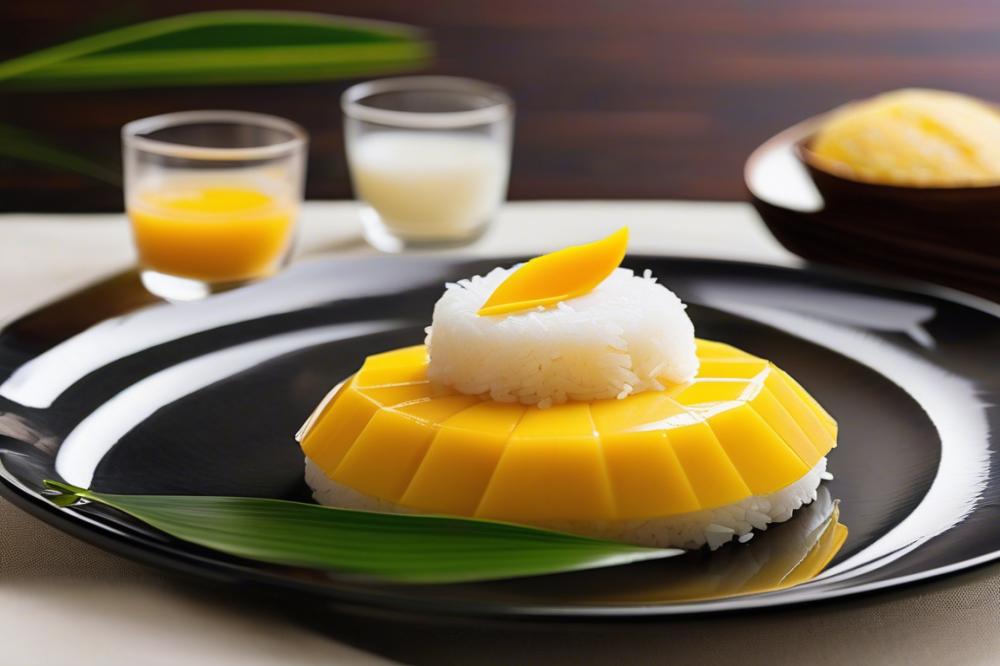

To create this delightful Thai dessert, gather the following essential ingredients:
- Glutinous rice (sticky rice)
- Coconut milk
- Ripe mango
- Sugar
- Salt
Next, follow these simple cooking instructions to bring your dessert recipe to life:
- Begin by soaking the sticky rice for several hours or overnight to allow it to absorb moisture.
- After soaking, steam the rice until it is fully cooked and has a sticky texture.
- Meanwhile, combine coconut milk, sugar, and salt in a saucepan. Heat gently to create a rich sauce.
- Once the rice is cooked, mix a portion of the coconut sauce into the sticky rice for added flavor.
- While the rice cools, slice the ripe mangoes into thin wedges, ensuring they are ripe and juicy.
- Finally, serve the sticky rice with the fresh mango on a plate, drizzling it with the remaining coconut sauce for a luscious finish.
Nutritional Information
Here’s a closer look at the nutritional content of each ingredient:
- Glutinous Rice: Approximately 370 calories per cup. This rice is high in carbohydrates but low in fat.
- Coconut Milk: Roughly 550 calories per cup. It provides healthy fats and adds a creamy texture to the dish.
- Ripe Mango: Contains about 150 calories in one medium-sized fruit. Mangoes are rich in vitamins A and C and offer dietary fiber.
- Sugar: About 48 calories per tablespoon. Sugar sweetens the dish but should be consumed in moderation.
- Salt: Minimal calories. Salt enhances flavor but should be used sparingly.
This combination transforms simple ingredients into a beloved sweet snack often enjoyed in Thai street food culture. The sticky rice offers a chewy texture, while the coconut milk brings a creamy richness. Ripe mango, as a tropical fruit, adds a refreshing sweetness, harmonizing beautifully with the other elements.
Asian desserts, especially classic ones like this, reflect the balance and flavors intrinsic to Thai cuisine. This dessert recipe not only satisfies the sweet cravings but also showcases a wonderful mix of textures and tastes. Enjoy making and sharing this traditional Thai dessert with friends and family.
Serving Suggestions
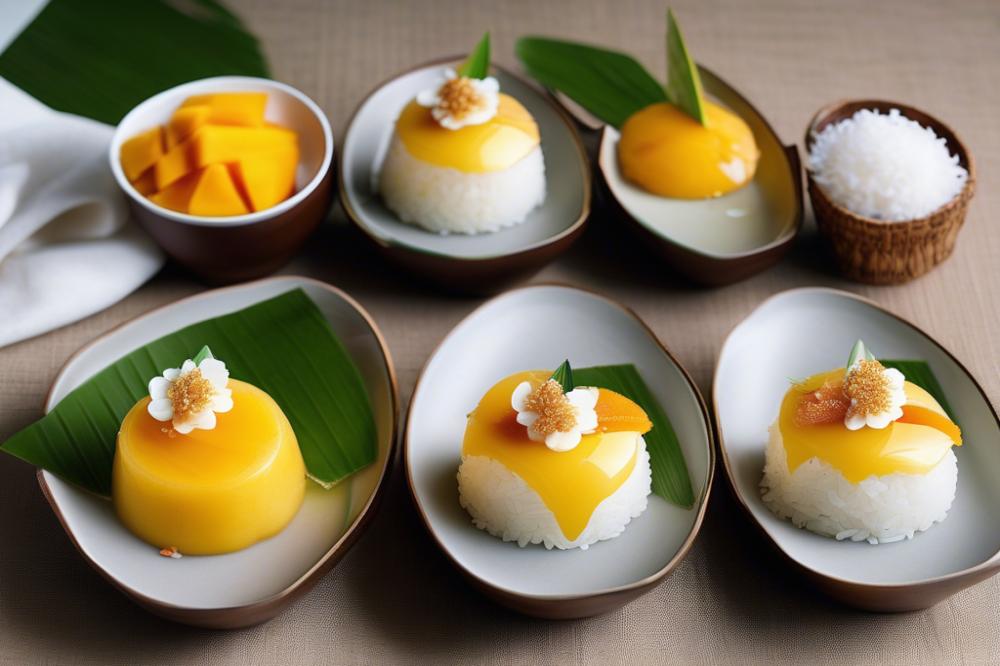

Sticky rice with mango offers a delightful experience that can be enhanced in many ways. One popular option is to garnish the dish with toasted sesame seeds or crispy mung beans. These additions not only add texture but also bring a nutty flavor that complements the meal.
For those seeking to elevate their dessert recipe, consider infusing the sticky rice with pandan flavor. This fragrant ingredient adds a beautiful aroma and a hint of green color, making the dish even more visually appealing.
Sometimes, people mix in various tropical fruits for a fresh twist. Slices of ripe pineapple, juicy strawberries, or vibrant kiwi can make a colorful addition to this sweet snack. Each bite can transform into a little fruit festival, celebrating the diversity of Asian desserts.
Traditionally, this delicacy is reserved for special occasions and celebrations. Thai cuisine often features sticky rice with mango during holidays and festivals. Its rich taste and creamy coconut milk bring warmth and joy to any gathering. Street food vendors also serve this treat, bringing it to life in busy markets.
Playing with flavors and textures can personalize this delightful dish in countless ways. Let your imagination guide you, and experience the richness of this traditional Thai dessert.
The Cultural Significance
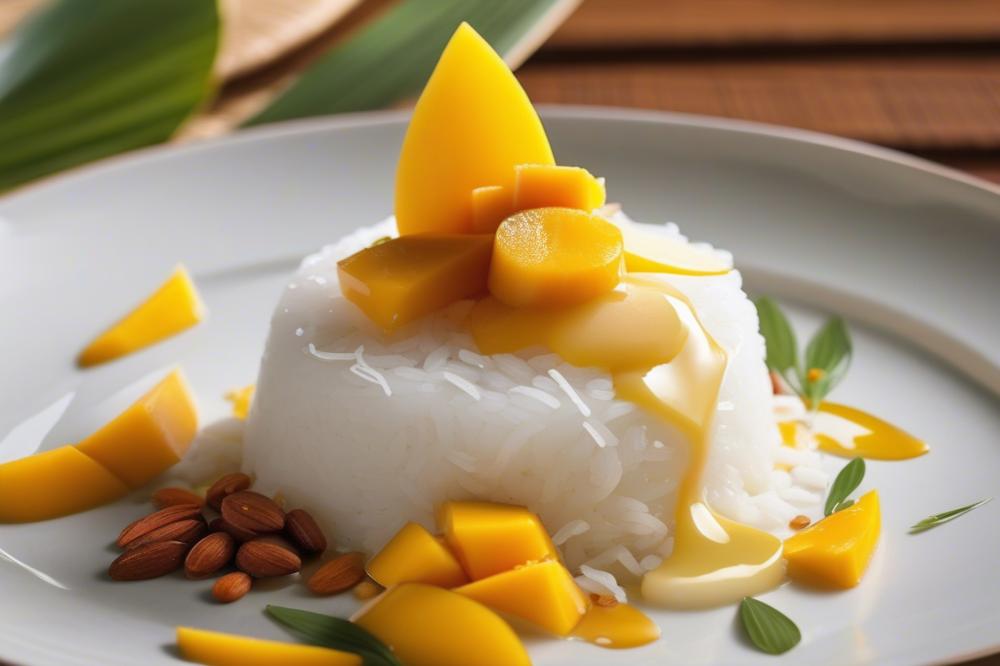

Sticky rice with mango holds a cherished place in Thai cuisine. This delightful dessert is not just about flavor; it reflects the culture and traditions of Thailand. At festivals and family gatherings, this sweet treat is a staple. People often prepare and share it during special occasions, showcasing their love for the dish and for each other.
This traditional Thai dessert is commonly associated with the Thai New Year, known as Songkran. During this celebration, families come together and enjoy many types of food. Sticky rice with mango becomes a symbol of unity and joy. Ripe mango and coconut milk blend together, creating a festive atmosphere around the dining table. Each bite evokes nostalgia, reminding everyone of childhood memories.
Moreover, this dessert recipe represents the essence of Thai hospitality. When visitors arrive, hosting families serve it as a way to honor their guests. Sharing food — especially sweet snacks like this — expresses warmth and generosity. Each portion is a gesture of kindness, reflecting deep cultural values.
In urban areas, the dish can frequently be found at street food stalls. Vendors sell it as a popular item, showcasing the blend of flavors that represent tropical fruits. Tourists often indulge in this dessert, contributing to its popularity outside Thailand. It serves as more than just a delicious choice among Asian desserts; it also offers a taste of Thai culture to the world.
Variations of the sticky rice recipe may exist, but the sincerity remains constant. The smooth coconut milk pouring over the warm sticky rice and ripe mango embodies simple delights. This combination produces not only a satisfying dessert but also a sweet reflection of Thai life.
Final Thoughts on This Beloved Dessert
Sticky rice paired with ripe mango is truly a cherished part of Thai cuisine. This dessert stands out for its combination of sweet, creamy, and chewy textures. It offers a wonderful balance between the rich taste of coconut milk and the fresh flavor of mango. Many people have fallen in love with its simplicity and elegance.
The dish showcases the beauty of Asian desserts, attracting food lovers from all around the world. With just a handful of ingredients, it becomes a delightful treat that is as pleasing to the eyes as it is to the palate. Cooking this dessert at home allows everyone to experience a taste of Thailand while also sharing something special with friends or family. Each layer of flavor invites you to delve deeper into the culinary richness of this culture.
Trying to make it at home can be a rewarding experience. Start by gathering glutinous rice, ripe mangoes, and coconut milk. Follow the simple steps to create a dish that will impress anyone. Enjoy the process, and let the flavors transport you to the vibrant streets of Thailand. What could be better than bringing a piece of this culture to your own kitchen?

